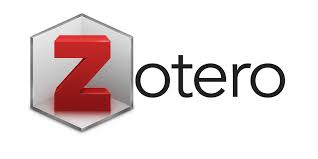Kemampuan Berpikir Kritis Mahasiswa pada Materi Aplikasi Persamaan Diferensial Orde Satu Masalah Peluruhan
DOI:
https://doi.org/10.29240/ja.v4i1.4123Keywords:
Critical thinking ability, Application of differential equations, Decay problemsAbstract
This article aims to describe students' critical thinking ability in the application material of one-order differential equations, especially decay problems. This study used a qualitative descriptive method, three students of the sixth semester in Universitas Indraprasta PGRI were selected as research subjects. The instruments used in the study are tests, interview guidelines as well as researchers as key instruments. Data analysis techniques are carried out through data reduction, which is continued the presentation of data, as well as the withdrawal of conclusions/verification. Data validity test is done through triangulation technique. The results showed that S1 with high critical thinking ability, fulfilling all indicators, namely interpreting problems, analyzing solutions from problems, implementing solutions, evaluating solutions, and inferring results. S2 with medium critical thinking ability is meeting two indicators, namely interpreting problems and analyzing solutions, and S3 with low critical thinking ability has not met all the indicators.
Downloads
References
Adinda, A., & Hamka. (2019). Critical Thinking Skills of Students From the Aspect of Strategy and Tactics in Solving Mathematics. International Journal of Insights for Mathematics Teaching, 02(1), 47–56. http://journal2.um.ac.id/index.php/ijoimt/article/view/7122
Angelo, T. A. (1995). Classroom Assessment for Critical Thinking. Teaching of Psychology, 22(1), 6–7. https://journals.sagepub.com/doi/pdf/10.1207/s15328023top2201_1
Dwyer, C. P., Hogan, M. J., & Stewart, I. (2014). An integrated critical thinking framework for the 21st century. Thinking Skills and Creativity, 12, 43–52. https://doi.org/10.1016/j.tsc.2013.12.004
Facione, P. A. (2011). Critical Thinking : What It Is and Why It Counts. Insight Assessment, 1–28. https://www.researchgate.net/publication/251303244_Critical_Thinking_What_It_Is_and_Why_It_Counts
Karakoc, M. (2016). The Significance of Critical Thinking Ability in Terms of Education. International Journal of Humanities and Social Science, 6(7), 81–84. www.ijhssnet.com%0AThe
Mallet, D. G., & McCue, S. W. (2009). Constructive development of the solutions of linear equations in introductory ordinary differential equations. International Journal of Mathematical Education in Science and Technology, 40(5), 587–595. https://doi.org/10.1080/00207390902759626
MariÄić, S., Å pijunović, K., & Lazić, B. (2016). The Influence of Content on the Development of Students’ Critical Thinking in the Initial Teaching of Mathematics. Croatian Journal of Education, 18(1), 11–40. https://doi.org/10.15516/cje.v18i1.1325
Moore, K. C., & Carlson, M. P. (2012). Students’ images of problem contexts when solving applied problems. Journal of Mathematical Behavior, 31(1), 48–59. https://doi.org/10.1016/j.jmathb.2011.09.001
Ningsih, Y. L., & Rohana, R. (2018). Pemahaman Mahasiswa Terhadap Persamaan Diferensial Biasa Berdasarkan Teori Apos. Jurnal Penelitian Dan Pembelajaran Matematika, 11(1). https://doi.org/10.30870/jppm.v11i1.2995
Nuraeni, Z. (2017). Aplikasi Persamaan Diferensial Dalam Estimasi Jumlah Populasi. Delta: Jurnal Ilmiah Pendidikan Matematika, 5(1), 9. https://doi.org/10.31941/delta.v5i1.384
Seventika, S. Y., Sukestiyarno, Y. L., & Mariani, S. (2018). Critical thinking analysis based on Facione (2015) - Angelo (1995) logical mathematics material of vocational high school (VHS). Journal of Physics: Conference Series, 983(1). https://doi.org/10.1088/1742-6596/983/1/012067
Sholihah, F., Inganah, S., & Effendi, M. M. (2017). Analysis of Critical Thinking Skills By Homeschooling’S Students in Solving Mathematical Problem. Mathematics Education Journal, 1(2), 41. https://doi.org/10.22219/mej.v1i2.4628
Solihati, S., & Suparman. (2019). Design of mathematics learning module based on problem based learning to improve critical thinking ability students of Class VIII Junior High School in Indonesia. International Journal of Scientific and Technology Research, 8(12), 2608–2616. http://www.ijstr.org/final-print/oct2019/Design-Of-Mathematics-Module-Development-Based-On-Pmri-To-Improve-Critical-Thinking-Ability-Students-Of-Class-Viii-Junior-High-School-In-Indonesia.pdf
Suryana, A., & Nurrahmah, A. (2020). Guided Discovery Learning berbasis APOS : Alternatif Mengatasi Kesulitan Mahasiswa dalam Berpikir Reflektif Matematis. SINASIS 1 Prosiding Seminar Nasional Sains, 1(1), 361–372.
ŽivkoviĿ, S. (2016). A Model of Critical Thinking as an Important Attribute for Success in the 21st Century. Procedia - Social and Behavioral Sciences, 232(4), 102–108. https://doi.org/10.1016/j.sbspro.2016.10.034
Downloads
Published
Issue
Section
Citation Check
License
Authors who publish with ARITHMETIC: Academic Journal of Math agree to the following terms:
- Authors retain copyright and grant the journal right of first publication with the work simultaneously licensed under a Creative Commons Attribution-NonCommercial-ShareAlike 4.0 International License (CC BY-NC-SA 4.0) that allows others to share the work with an acknowledgment of the work's authorship and initial publication in this journal.
- Authors are able to enter into separate, additional contractual arrangements for the non-exclusive distribution of the journal's published version of the work (e.g., post it to an institutional repository or publish it in a book), with an acknowledgment of its initial publication in this journal.
- Authors are permitted and encouraged to post their work online (e.g., in institutional repositories or on their website) prior to and during the submission process, as it can lead to productive exchanges, as well as earlier and greater citation of published work (See The Effect of Open Access).







